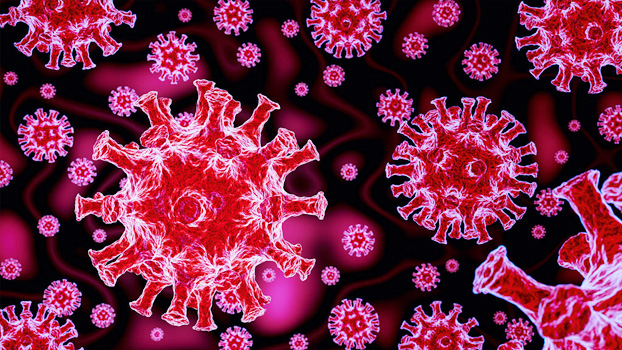Grim milestone: Bangladesh virus cases top 40,000, deaths 550

Bangladesh has reached a grim milestone of the coronavirus as the number of confirmed cases surpassed 40,000 mark and deaths 550.
Experts call for ‘curfew-style lockdown’ at least for two weeks to control the situation as the government is relaxing its ‘general holidays’ from May 31.
According to the latest update, on Thursday 2,029 more people were tested positive overnight, the highest in a daily count, and 15 more died from the disease during the period of 24 hours.
With that, Additional Director General for Health Prof Nasima Sultana said at the daily briefing that the death toll from the pandemic rose to 559 and total number of cases surged to 4,0 321.
The recovery count also rose to 8,425 after another 500 patients were discharged from the hospitals in the same period till 8am of Thursday.
The government tested 9,310 samples in 49 authorised labs across the country during that time.
Curfew-style lockdown
Bangladesh confirmed the first cases on March 8 and the first death on March 18.
It was even less than 10 cases when the country first announced general holidays on March 24.
With the rise of testing, the case detection also began to rise in mid-April.
“Bangladesh did not receive the health benefits of the "lockdown" not because "lockdown" as a strategy was misplaced but it was implemented in a "Bangladesh style",” Dr Ashikur Rahman, a senior economist of the Policy Research Institute told Bangladesh Post.
“What would have been useful was a "Curfew-styled lockdown" starting from March 20th for three weeks, which could have significantly prevented community transmission,” he said.
“Unfortunately, those who advocated curfew styled lockdown (even within the Government) were ignored because of the strong economic interests that unfortunately dominate policy space in the contemporary world.
“And it is fair to say now that Bangladesh cannot sustain another two months of strict lockdown to get the health response right as our economic pillars will be pushed to a near collapse threshold,” he said.“However, I feel, we still have a critical "two weeks window" to get things right,” he said as economic activities is generally very low in Bangladesh in ten days following the Eid-ul-Fitr vacation.
“Hence, if we use the time and start a "curfew styled" lockdown for the following two weeks - then the chances of significantly reducing the community transmission is high,” he argued.
“And the economic costs associated with it will also be very low.
This is perhaps our last chance to get the health response right as much as possible.
“After that, whether we like it or not - herd immunity will remain our last feasible option. But those who advocate the importance of "herd immunity response" by flagging the economic costs should also remember one basic point - if Vietnam is Covid free and most of East Asia is Covid free - while Bangladesh remains a Covid hotspot - do you think our trading partners will keep their trading window open with us?
“If they can close China off - what would stop them from not closing their doors to Bangladesh if we remain incapable of containing the disease? Would'nt that come at an economic cost?,” he said as some businesspeople argue they might lose the market due to hard lockdown during the pandemic.
“I think it is a fallacy to think that one can get the economic response to this crisis right without getting the health response right (and vice versa).
“Hence, we have to be extremely careful how we plan our next three months. If we don't respect the nuances associated with this grave problem, then future history will look back at this cross-road and showcase how policy blunders can destroy a nation,” Dr Ashikur Rahman said.
Latest cases, deaths analysis
Of the latest 15 deaths, two are in their 30s, five in their 50s, five in their 60s, two in their 70s and one in his 90s.
Among the COVID-19 victims, six are in Dhaka city and rests are outside the capital city.
According to the division-wise data, seven deaths took place in Dhaka division and eight in Chattogram division.
Dhaka, Narayanganj and Chattogram are the “hotspots” because the maximum numbers of cases were detected in the three cities.
As of May 27, Dhaka city has been considered as the worst-affected with 14,997 COVID cases, according to Institute of Epidemiology, Disease Control and Research (IEDCR).
Among the COVID-19-prone districts, Chattogram is the most hardest- hit one with 1948 cases, according to the IEDCR data.
It was followed by Narayanganj 1948 cases, Cumilla with 680, Munshiganj with 655, Dhaka with 629, Gazipur with 618 positive cases, Cox’s Bazar with 470, Noakhali with 417 cases, Mymensingh with 409 cases and Rangpur with 394 cases.
The government has so far tested 275,776 samples since the detection of the first COVID-19 cases in the country.
The World Health Organisation declared the virus pandemic on March 11.




